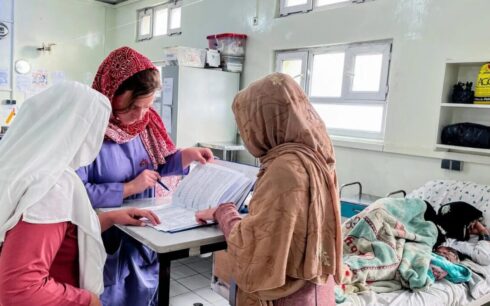A measles outbreak in Afghanistan resulted in the deaths of 21 people in June, according to a report by the World Health Organization (WHO).
The report detailed that a total of 6,390 new suspected measles cases were recorded last month, reflecting a 5.9 percent decrease compared to the previous month.
Since the beginning of 2024, Afghanistan has reported 35,021 suspected measles cases with 147 associated deaths. The WHO also provided an update on the ongoing COVID-19 situation, noting that since the onset of the pandemic in February 2020, there have been 239,009 COVID-19 cases and 8,010 deaths across 34 provinces, with a case fatality rate of 3.4 percent.
Between November 1, 2023, and June 30, 2024, Health Cluster partners delivered health services to 549,154 returnees, comprising 287,453 females and 261,701 males. This included 254,238 primary healthcare consultations, 193,265 individuals reached through health promotion activities, 26,385 receiving secondary healthcare services, 41,387 provided with mental health and psychosocial support services, 32,986 maternal, newborn, and child health services, and 893 trauma care recipients.
Acute respiratory infections and acute diarrheal diseases were the leading causes of morbidity, accounting for 32.1 percent of all consultations across age groups.
The WHO report also highlighted the efforts made between May 10 and June 30, 2024, by Health Cluster partners to assist 95,991 people affected by floods in the provinces of Baghlan, Badakhshan, Ghor, Takhar, Faryab, Badghis, and Jawzjan. The assistance reached 37,342 women, 20,752 men, 22,726 girls, and 15,171 boys. Out of the total beneficiaries, 60,305 received primary healthcare consultations, 26,966 were engaged in health promotion activities, 4,505 received mental health and psychosocial support services, 3,690 received maternal, newborn, and child health services, and 525 received trauma care services.
In total, 46 Health Cluster partners provided humanitarian health services to 589,205 people through 763 health facilities in 287 districts across all 34 provinces of Afghanistan.





